Do you have a question about the Toyota Sienna 2003 and is the answer not in the manual?
Provides a general overview of the vehicle's instruments and controls.
Details the components and their locations on the instrument panel.
Explains the layout and components of the instrument cluster.
Lists and explains various indicator symbols found on the instrument panel.
Covers the operation and security of vehicle keys and doors.
Explains the function and operation of the vehicle's engine immobiliser system.
Explains the operation of the vehicle's power windows.
Covers the operation and locking of the back door.
Instructions on how to open and close the vehicle's hood.
Information about the fuel tank cap and its indicator.
Explains the operation of the electric moon roof.
Details front seat precautions, especially with SRS side airbags.
Rear seat precautions for safety during operation and in case of accidents.
Guide on how to adjust head restraints for safety and comfort.
Instructions on operating and precautions for the seat heater system.
Information and precautions regarding the use of seat belts.
Details the SRS driver and front passenger airbag systems and safety precautions.
Explains the SRS side airbag system and safety precautions.
Information and precautions for using child restraint systems.
Operation of headlights and turn signals with an automatic light control system.
How to operate the emergency flashers for warnings.
Operation of windshield wipers and washer fluid squirting.
Operation of rear window and outside rear view mirror defoggers.
Explains the fuel gauge and low fuel level warning light.
Details the engine coolant temperature gauge and related warnings.
Explains the tachometer and its function in monitoring engine speed.
Explains various service reminder indicators and warning buzzers.
Explains the ignition switch positions and steering lock mechanism.
Details the automatic transmission, selector lever, and shift positions.
Explains the function and operation of the traction control system.
Details the integrated control of systems like ABS, traction control, and engine control.
Explains the tire pressure warning system and its indicator light.
Operation and safety precautions for using the cruise control system.
Basic operations of the audio system, including turning it on/off and switching functions.
How to insert and play discs on the compact disc player.
Manual tone adjustment function for audio system.
How to scan radio frequencies or preset stations.
How the radio seeks and plays stations.
Controls for the front manual air conditioning system.
Controls for the front automatic air conditioning system.
How to defog the inside of the windshield for better visibility.
Controls for the rear manual air conditioning system.
Controls for the rear automatic air conditioning system.
Guidelines for the initial break-in period of the vehicle.
Information on fuel type, capacity, and octane rating.
Information about the three-way catalytic converter and its purpose.
Safety precautions related to engine exhaust fumes.
Overview of the tandem master cylinder brake system.
Precautions for stowing luggage or cargo in the vehicle safely.
Information on different types of tires and their characteristics.
Checks to perform around the vehicle before entering it.
Advice for driving in different conditions like crosswinds, curbs, bumps, and hills.
Recommendations for driving safely in winter conditions.
Guidelines and precautions for towing a trailer.
Tips for improving fuel economy and vehicle longevity.
Checks and procedures to follow if the vehicle will not start.
What to do if the engine stalls while the vehicle is in motion.
Procedure to follow if the vehicle's engine overheats.
Steps to take if you encounter a flat tire.
How to free a vehicle stuck in snow, mud, or sand.
Information on towing services and vehicle preparation for towing.
Common causes of corrosion and how to prevent it.
How to wash your Toyota regularly for cleanliness and corrosion prevention.
How to polish and wax the vehicle's finish for protection.
How to clean the vehicle's interior, including vinyl, carpets, and seat belts.
Overview of Toyota's designed maintenance requirements and owner responsibilities.
Day-to-day care practices important for vehicle operation.
Clues that indicate service may be needed for the vehicle.
Information on emission inspection programs and how they affect the vehicle.
Covers maintenance tasks related to the engine and chassis.
Identifies major components in the engine compartment.
Diagrams showing the locations of fuse boxes and spare fuses.
General safety precautions to follow when performing DIY maintenance.
Lists parts and tools required for common do-it-yourself maintenance tasks.
How to check the engine oil level using the dipstick.
Guidance on selecting the correct engine oil grade and viscosity.
How to check the engine coolant level in the reservoir.
How to check the brake fluid level and add fluid if necessary.
How to check tire pressures and keep them at the proper level.
How and why to rotate tires to equalize wear and extend tire life.
Guidance on when to use snow tires or chains.
How to replace vehicle wheels and the importance of proper selection.
Covers maintenance of electrical components like battery, fuses, and bulbs.
Precautions and steps for checking the battery's condition.
Safety precautions for recharging the vehicle battery.
How to check, replace, and identify fuses for electrical components.
Instructions on how to replace vehicle light bulbs.
Details the vehicle's dimensions and weight specifications.
Engine specifications including type, bore, stroke, and displacement.
Information on fuel type, capacity, and octane rating.
Tire size and pressure specifications for normal driving and trailer towing.
Diagrams showing fuse locations in the engine compartment.
How U.S. owners can report vehicle safety defects to NHTSA and Toyota.
Explanation of uniform tire quality grading systems (Treadwear, Traction, Temperature).
Toyota's commitment to customer satisfaction and vehicle quality.
Policy for providing transportation assistance during warranty repairs.
Overview of basic, powertrain, restraint, and corrosion warranties.
Summary of Federal and California emission control warranty coverages.
Toyota's warranty for emission defects and compliance with standards.
Warranty covering repairs needed to pass emissions tests.
Procedure to follow if the vehicle fails an emissions test.
Where to get information or report complaints about emission warranty.
Explains owner's warranty rights and responsibilities for emission control.
Details warranty coverage for emission control systems in California.
Guidelines on using Genuine Toyota Parts for maintenance and repairs.
How to obtain warranty service for original equipment tires.
Contact information for tire manufacturers.
Owner's responsibility for vehicle operation and maintenance.
Guidance on where to get vehicle maintenance performed.
Information on obtaining warranty service in different geographic regions.
Procedures for emergency repairs when a dealership is not available.
Provides a general overview of the vehicle's instruments and controls.
Details the components and their locations on the instrument panel.
Explains the layout and components of the instrument cluster.
Lists and explains various indicator symbols found on the instrument panel.
Covers the operation and security of vehicle keys and doors.
Explains the function and operation of the vehicle's engine immobiliser system.
Explains the operation of the vehicle's power windows.
Covers the operation and locking of the back door.
Instructions on how to open and close the vehicle's hood.
Information about the fuel tank cap and its indicator.
Explains the operation of the electric moon roof.
Details front seat precautions, especially with SRS side airbags.
Rear seat precautions for safety during operation and in case of accidents.
Guide on how to adjust head restraints for safety and comfort.
Instructions on operating and precautions for the seat heater system.
Information and precautions regarding the use of seat belts.
Details the SRS driver and front passenger airbag systems and safety precautions.
Explains the SRS side airbag system and safety precautions.
Information and precautions for using child restraint systems.
Operation of headlights and turn signals with an automatic light control system.
How to operate the emergency flashers for warnings.
Operation of windshield wipers and washer fluid squirting.
Operation of rear window and outside rear view mirror defoggers.
Explains the fuel gauge and low fuel level warning light.
Details the engine coolant temperature gauge and related warnings.
Explains the tachometer and its function in monitoring engine speed.
Explains various service reminder indicators and warning buzzers.
Explains the ignition switch positions and steering lock mechanism.
Details the automatic transmission, selector lever, and shift positions.
Explains the function and operation of the traction control system.
Details the integrated control of systems like ABS, traction control, and engine control.
Explains the tire pressure warning system and its indicator light.
Operation and safety precautions for using the cruise control system.
Basic operations of the audio system, including turning it on/off and switching functions.
How to insert and play discs on the compact disc player.
Manual tone adjustment function for audio system.
How to scan radio frequencies or preset stations.
How the radio seeks and plays stations.
Controls for the front manual air conditioning system.
Controls for the front automatic air conditioning system.
How to defog the inside of the windshield for better visibility.
Controls for the rear manual air conditioning system.
Controls for the rear automatic air conditioning system.
Guidelines for the initial break-in period of the vehicle.
Information on fuel type, capacity, and octane rating.
Information about the three-way catalytic converter and its purpose.
Safety precautions related to engine exhaust fumes.
Overview of the tandem master cylinder brake system.
Precautions for stowing luggage or cargo in the vehicle safely.
Information on different types of tires and their characteristics.
Checks to perform around the vehicle before entering it.
Advice for driving in different conditions like crosswinds, curbs, bumps, and hills.
Recommendations for driving safely in winter conditions.
Guidelines and precautions for towing a trailer.
Tips for improving fuel economy and vehicle longevity.
Checks and procedures to follow if the vehicle will not start.
What to do if the engine stalls while the vehicle is in motion.
Procedure to follow if the vehicle's engine overheats.
Steps to take if you encounter a flat tire.
How to free a vehicle stuck in snow, mud, or sand.
Information on towing services and vehicle preparation for towing.
Common causes of corrosion and how to prevent it.
How to wash your Toyota regularly for cleanliness and corrosion prevention.
How to polish and wax the vehicle's finish for protection.
How to clean the vehicle's interior, including vinyl, carpets, and seat belts.
Overview of Toyota's designed maintenance requirements and owner responsibilities.
Day-to-day care practices important for vehicle operation.
Clues that indicate service may be needed for the vehicle.
Information on emission inspection programs and how they affect the vehicle.
Covers maintenance tasks related to the engine and chassis.
Identifies major components in the engine compartment.
Diagrams showing the locations of fuse boxes and spare fuses.
General safety precautions to follow when performing DIY maintenance.
Lists parts and tools required for common do-it-yourself maintenance tasks.
How to check the engine oil level using the dipstick.
Guidance on selecting the correct engine oil grade and viscosity.
How to check the engine coolant level in the reservoir.
How to check the brake fluid level and add fluid if necessary.
How to check tire pressures and keep them at the proper level.
How and why to rotate tires to equalize wear and extend tire life.
Guidance on when to use snow tires or chains.
How to replace vehicle wheels and the importance of proper selection.
Covers maintenance of electrical components like battery, fuses, and bulbs.
Precautions and steps for checking the battery's condition.
Safety precautions for recharging the vehicle battery.
How to check, replace, and identify fuses for electrical components.
Instructions on how to replace vehicle light bulbs.
Details the vehicle's dimensions and weight specifications.
Engine specifications including type, bore, stroke, and displacement.
Information on fuel type, capacity, and octane rating.
Tire size and pressure specifications for normal driving and trailer towing.
Diagrams showing fuse locations in the engine compartment.
How U.S. owners can report vehicle safety defects to NHTSA and Toyota.
Explanation of uniform tire quality grading systems (Treadwear, Traction, Temperature).
Toyota's commitment to customer satisfaction and vehicle quality.
Policy for providing transportation assistance during warranty repairs.
Overview of basic, powertrain, restraint, and corrosion warranties.
Summary of Federal and California emission control warranty coverages.
Toyota's warranty for emission defects and compliance with standards.
Warranty covering repairs needed to pass emissions tests.
Procedure to follow if the vehicle fails an emissions test.
Where to get information or report complaints about emission warranty.
Explains owner's warranty rights and responsibilities for emission control.
Details warranty coverage for emission control systems in California.
Guidelines on using Genuine Toyota Parts for maintenance and repairs.
How to obtain warranty service for original equipment tires.
Contact information for tire manufacturers.
Owner's responsibility for vehicle operation and maintenance.
Guidance on where to get vehicle maintenance performed.
Information on obtaining warranty service in different geographic regions.
Procedures for emergency repairs when a dealership is not available.
| Brand | Toyota |
|---|---|
| Model | Sienna 2003 |
| Category | Automobile |
| Language | English |
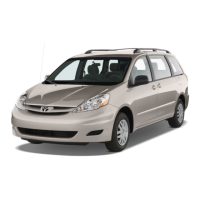
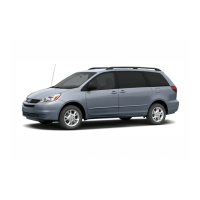

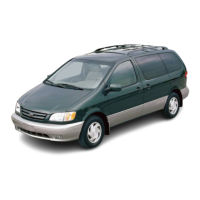
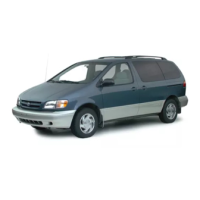
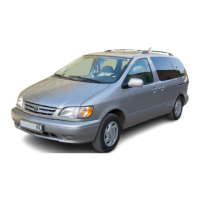

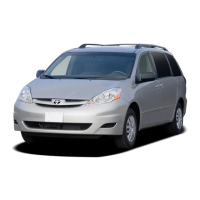

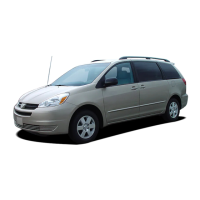
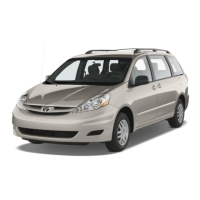
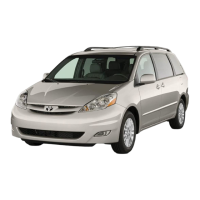
